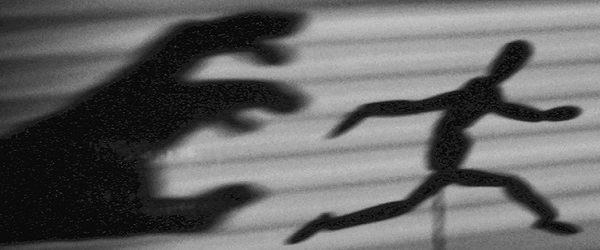When we are close to people, we often have times when we are forced to question our closeness. We question the validity of the connection. Often, the distance between us becomes all too clear and we begin to feel the separation.
I want to discuss methods for improving the sense of connectedness to increase the interpersonal love we feel, the compassion, and the empathy. I want to talk about the sense of presence which occurs during the course of our connection with others.
Often times when we are with others, we get the impression that they are just running along in their own mind and not really connecting with us. Or we get the impression that we are running along in our own minds and not really connecting with them: the thing is, focusing in on them is probably not the best course of action and trying to define their inner thoughts is probably a losing battle.
I’ve found something which works for me in this situation, something which helps. I open myself up to them, and I open myself up to my immediate environment and what’s going on around me. I try to become open to whatever might be going on with the other person and then I open myself up to whatever shared experience there is.
By being open in this way, we become aware of shared experiences: both of our experiences being in this place and time. That experience of space and time itself is dual when shared between two persons. Picture two images of the moon intersecting. An overlap forms like the shadow of the earth expanding from the center into each full moon, and the full moons wane to mere slivers of light. That growing earth shadow represents that shared experience, the duality. If those two moons were to pass right into each other and align perhaps that shadow, those moons would disappear as the true earth lights up in the center, a singularity, or a perfect union.
For now it’s just two slivers of new moon on either side of that shadow. Those slivers on either side represent our identities.
We each have our own sense of identity as individuals, but what we have even more is that shared sense of experience in the center, a shared sense of presence, a shared special sense. The earth is far bigger than the moon after all.
With this process we’re looking to increase that shared space without working on the smaller details. The details of a life are not typically shared; however, we often know if someone is suffering, celebrating, sad or expectant; we tend to sense, to an extent, their state of mind: it is transmitted to us via that connection.
So when we’re connected, with 95 percent being our shared experience (duality) and 5 percent being pure individuality, there is an inference of what kind of state of mind the other person is in. We can guess at that, and we can then open ourselves to their experience.
We won’t do this because we are covetous of the other person’s experience but simply because we want them to know that the connection is there and is substantial and that it isn’t just superficial. Opening yourself up to that shared experience is one of the ways to achieve this.
So if someone’s scared, we can allow that sense of fear to be present in the interaction, at least while it’s still there (our experience of fear, like all feelings, is constantly in motion, ever-changing). This could go a long way toward turning a subjective negative emotion into a positive thought.
Even though someone might say, “Oh sure I’m scared, I’m always scared, this situation’s scaring me and in fact I get scared all the time,” remember: there could be a regular return to feelings of fear; it could be a general sense of fear. There could be a number of things going on, but no matter the circumstances, the person isn’t actually intellectually focused on the fact that they are feeling fear regularly or all the time: they are usually just subjectively feeling it.
Chances are the experience of fear has driven them crazy. They erupt into an emotional analysis and not an intellectual one (a logical one), with exclamations like “Oh my god, look what this fear is doing to me! Oh look, I’m experiencing all of these things! My chest is tight, I’m sweating and I feel so awkward!” etc. Everything is an emotional reaction to that fear. The initial fear they felt though, the pictures, the thoughts, or the words comprising that fear, doesn’t necessarily linger through their own analysis of the situation, but because of their subjectivity, the fear might be reinforced by it.
The feelings of fear themselves tend to be on repeat; they will feel the fear and then it will fade; it will rise and then fade again, rise and fade. Like all complex emotions, it acts in cycles and triggers other emotions. This is important to recognize; the fear doesn’t necessarily completely vanish when it isn’t felt. Because the rationale for the fear persists and the ladder of secondary emotions/side effects of the fear remains intact.
That rationale is what roots the fear within you; it’s the legs the fear walks upon, to return to you each time, in a repeating cycle. The experience will come and go but many of the residual effects will remain in effect. A resultant tension may persist in certain parts of the body, even if the sensation in the mind is passed. When fear is felt, a muscular tension may continue on and it may become habituated. Such side effects, once habituated, can easily trigger the recurrence of fear, probably even under completely different stimulus. Nevertheless, the fear will return because of the habituated symptoms of the original fear.









